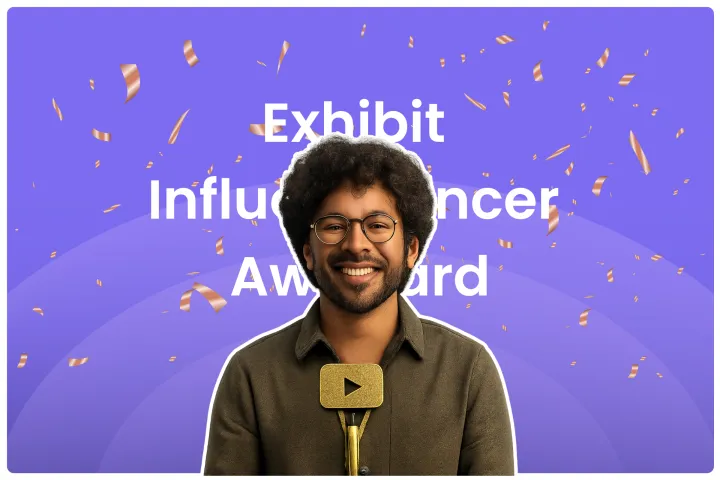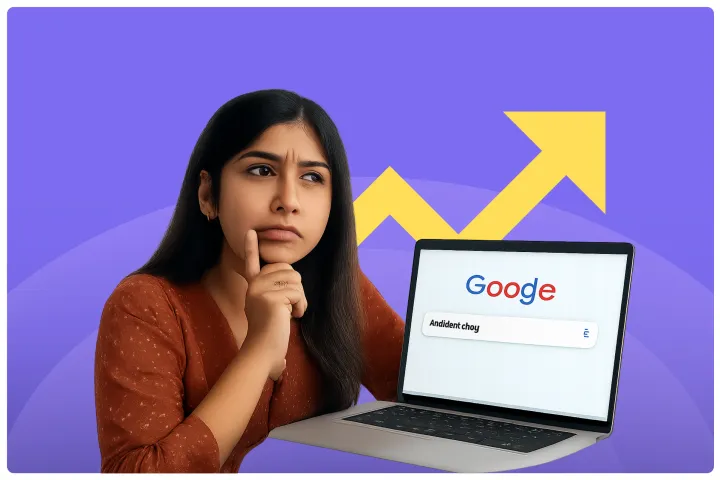Cost For Instagram Marketing: Complete Info (2025)
Learn everything about Instagram marketing costs. Get insights on pricing, budgets, and strategies to maximize ROI for your Instagram campaigns.
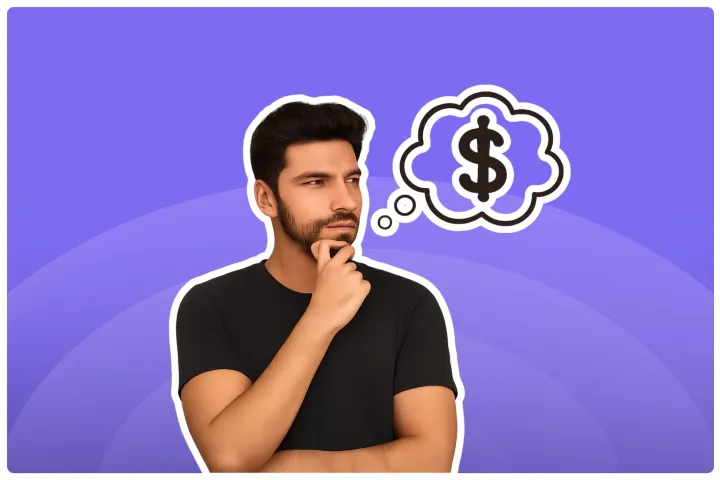
With over 350 million users in India, Instagram is a goldmine of potential customers just waiting to find you. But let's talk about the big question on every brand owner's mind: "How much is this going to cost me?" 🤔
Figuring out Instagram advertising costs can feel like trying to solve a puzzle. You see a lot of numbers thrown around, and it's tough to know what's real and what's not. You want to invest your money wisely and get the best possible return, right?
Don't worry, we've got your back! This guide will break down everything you need to know about Instagram marketing costs in India for 2025. We'll give you clear, straightforward answers, backed by recent data. We'll talk about ad spends, influencer collaborations, and how to create a budget that works for you—without the confusing jargon.
Think of us as your friendly guide on this journey. Let's decode the costs together and get you ready to launch campaigns that not only look amazing but also deliver real results for your business.
Cost of Instagram Marketing in India
Factors Influencing Instagram Marketing Costs
Why do these costs vary so much? It's not random, we promise! Several factors work together to determine your final ad spend. Understanding them will help you optimize your budget.
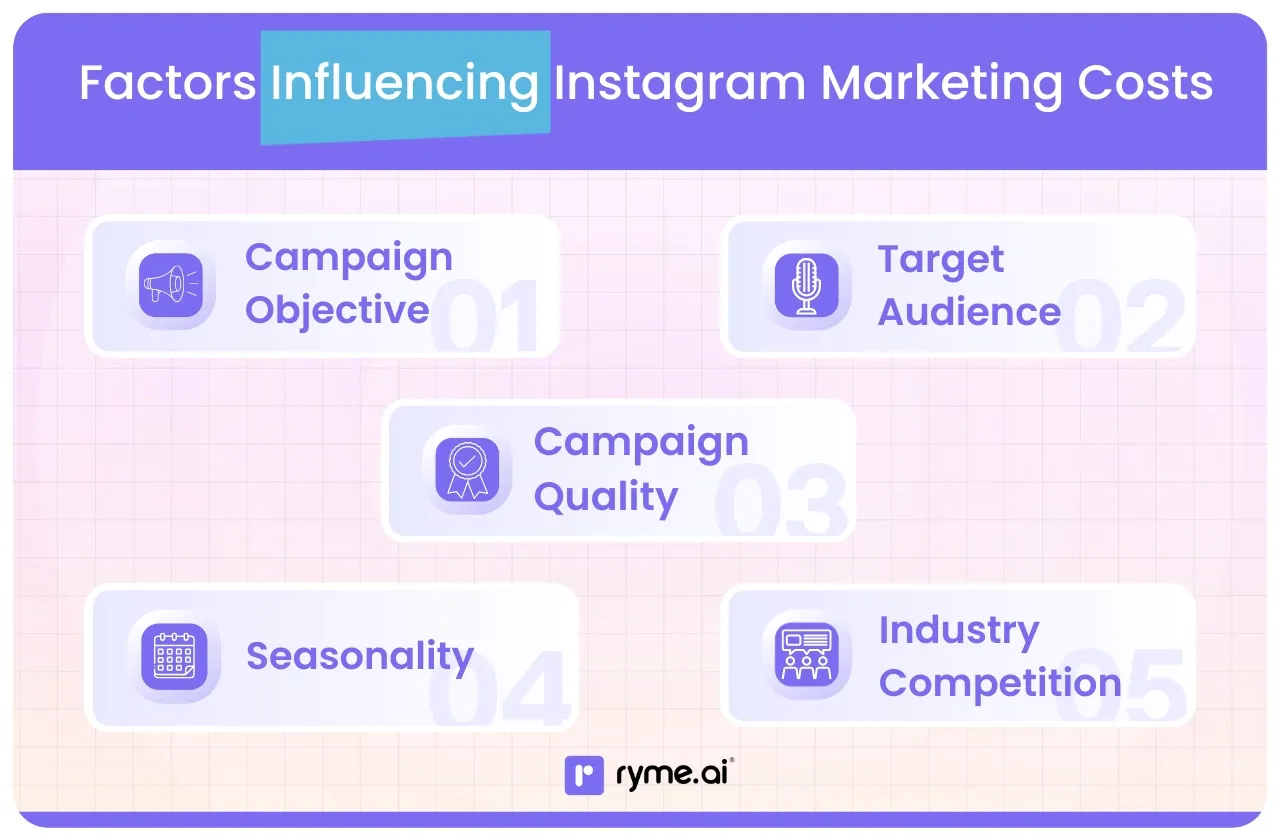
1) Campaign Objective
What do you want to achieve with your ad? Your answer to this question is the biggest cost driver.
- Awareness Campaigns (CPM/CPV): If you just want to get your brand name out there, you'll pay for impressions or views. These campaigns are usually the cheapest because you're reaching a broad audience.
- Consideration Campaigns (CPC): If you want people to visit your website, check out your profile, or send you a message, you'll pay per click. These are moderately priced.
- Conversion Campaigns (CPA/CPL): If you want users to buy a product or sign up, you're aiming for conversions. These are the most expensive because you're asking users to take a high-value action. Instagram's algorithm has to work harder to find people most likely to convert.
2) Target Audience
Who are you trying to reach? The more specific your audience, the higher the cost can be.
- Broad Audience: Targeting a wide demographic (e.g., all women aged 18-35 in India) is cheaper.
- Niche Audience: Targeting a very specific group (e.g., vegan fitness enthusiasts aged 25-30 living in Mumbai who love to travel) will cost more. Why? Because you're competing with other brands for this highly valuable, smaller audience pool.
3) Campaign Quality (Ad Relevance & Engagement)
Instagram wants to show its users content they'll love. If your ad is high-quality and relevant, Instagram will reward you with lower costs.
- Ad Relevance Score: Instagram gives your ad a score based on how well it thinks your target audience will respond to it. A higher score means your ad is more likely to be shown, and you'll pay less.
- Engagement: Ads that get a lot of likes, comments, shares, and saves signal to Instagram that people find them interesting. This positive feedback loop reduces your advertising costs. So, invest in creating eye-catching visuals and compelling captions!
4) Seasonality
Timing is everything. Ad costs fluctuate throughout the year, especially during major holidays and shopping seasons.
- Peak Seasons: Expect costs to skyrocket during Diwali, Christmas, New Year, and major online sales events like the Amazon Great Indian Festival or Flipkart's Big Billion Days. There's more competition as every brand is trying to grab attention.
- Off-Seasons: Running campaigns during quieter periods can be more budget-friendly.
5) Industry Competition
If you're in a crowded market, be prepared for higher ad costs. Industries like e-commerce, fashion, beauty, and software services are highly competitive on Instagram. More brands are bidding for the same audience, which drives up the price for everyone.
Cost of Instagram Influencer Marketing
Beyond running ads, another powerful way to market on Instagram is by collaborating with influencers. This is a totally different pricing model, based on the influencer's reach, engagement, and niche.
Wondering how much influencers in India really charge? Let’s break it down.
Influencer Tiers and Pricing
Cost Determinants
Several things determine an influencer's final quote:
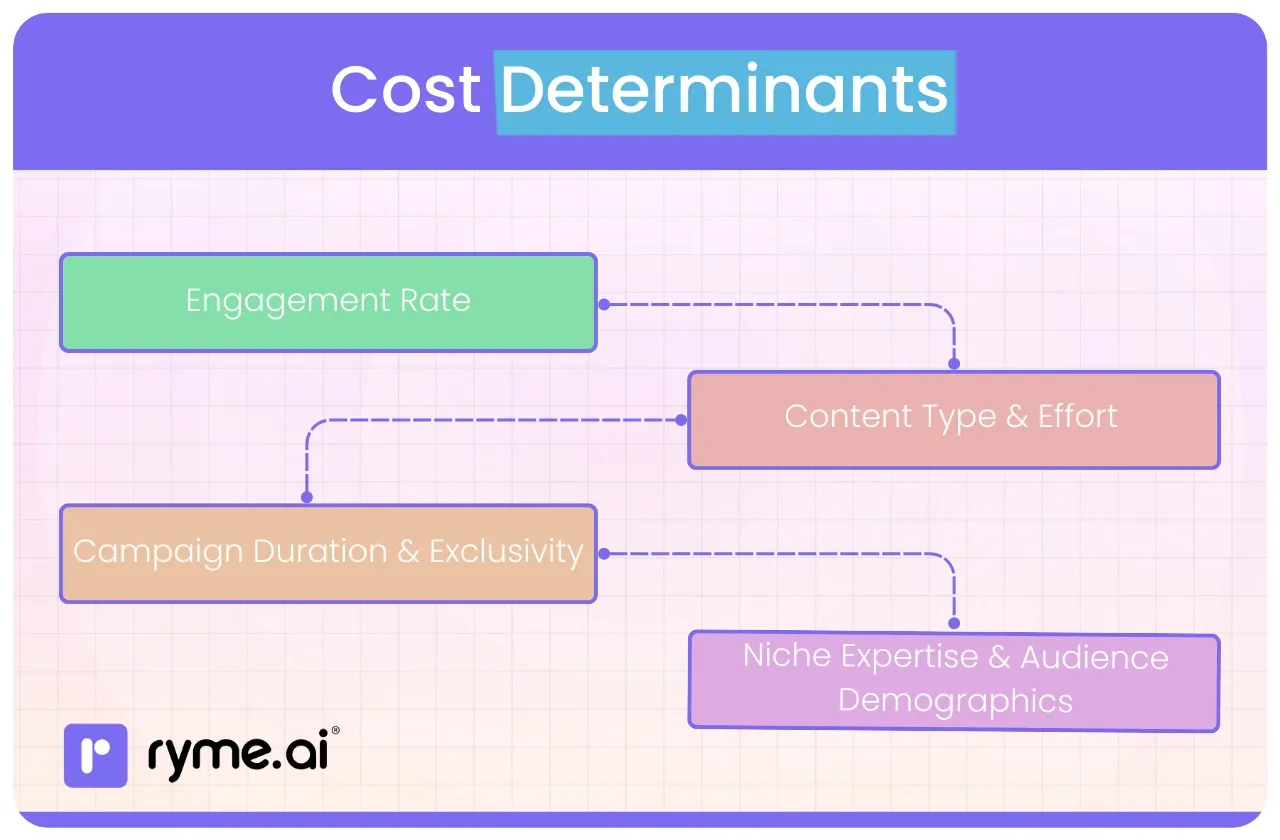
- Engagement Rate: An influencer with 20k followers and a 10% engagement rate is often more valuable than one with 100k followers and a 1% engagement rate.
- Niche: Influencers in high-demand niches like finance, technology, or high fashion can charge a premium.
- Content Format: A Reel usually costs more than a static post, which costs more than a set of Stories. Video content requires more effort to create.
- Deliverables: The price will depend on the number of posts, stories, and the duration of the campaign.
- Exclusivity & Usage Rights: If you want to be the only brand in your category the influencer works with for a period, or if you want to use their content in your own ads, it will cost extra.
Budgeting for Instagram Marketing
Okay, so you have the numbers. Now, how do you set a realistic budget?
Here’s a story to illustrate. Meet Riya, who started a sustainable home decor brand. With a small starting budget, she was confused. Should she spend it all on ads or find an influencer?
She decided to start small. She allocated ₹15,000 for her first month. She spent ₹5,000 on targeted ads to drive traffic to her website. She used the other ₹10,000 to collaborate with two nano-influencers who loved her products. The influencers created beautiful user-generated content that felt authentic, and her ads, which she targeted to an audience similar to the influencers' followers, performed brilliantly. Within 3 months, she had a steady stream of orders and was able to confidently increase her marketing budget.
Budget Ranges (Monthly)
- Small Businesses / Startups (Like Riya): ₹10,000 – ₹50,000. Focus on testing, finding what works, and collaborating with nano or micro-influencers.
- Medium-Sized Businesses: ₹50,000 – ₹2,00,000. Scale up successful ad campaigns and work with a mix of micro and macro-influencers.
- Large Enterprises: ₹2,00,000+. A comprehensive strategy involving always-on ad campaigns, and collaborations with macro and mega-influencers.
Tips for Effective Budget Allocation
- Start Small, Test Everything: Don't go all-in on your first campaign. Allocate a small budget to test different ad creatives, audiences, and objectives.
- Follow the 70-20-10 Rule:
- 70% of your budget should go to strategies you know work.
- 20% should be for scaling up promising new strategies.
- 10% should be for pure experimentation with new formats or audiences.
- Align with Your Goals: If your goal is sales, allocate more budget to conversion-focused ads and influencers known for driving purchases. If it's awareness, focus on CPM campaigns.
- Track Your ROI: Use Instagram's analytics and UTM parameters to track every rupee. Know which campaigns are giving you the best return on investment and double down on them.
Leveraging ryme.ai for Instagram Marketing Collaborations
Finding the right influencer can feel like searching for a needle in a haystack. The endless DMs, price negotiations, and tracking results—it's a full-time job! 😩
That's where technology can be a lifesaver.
About ryme.ai
ryme.ai is a platform designed to make influencer marketing simple, transparent, and effective. It connects brands with authentic influencers, helping you manage your campaigns from start to finish without the usual headaches. Think of it as your smart assistant for influencer collaborations.
Challenges in Traditional Instagram Influencer Marketing
- Discovery: Finding influencers who genuinely align with your brand values and have an engaged, real audience is tough.
- Pricing: How do you know if you're getting a fair price? Negotiations can be awkward and time-consuming.
- Fraud: Fake followers and low engagement are huge problems. It's crucial to know how to spot a fake Instagram account.
- Management: Juggling contracts, content approvals, payments, and performance tracking for multiple influencers is a logistical nightmare. A solid influencer marketing agreement is non-negotiable but can be complex to draft.
How ryme.ai Addresses Instagram Marketing Challenges
ryme.ai is the tool you need for influencer marketing because it tackles these problems head-on:
- AI-Powered Discovery: The platform uses smart algorithms to help you find the perfect influencer based on your niche, audience demographics, and campaign goals. No more endless scrolling!
- Transparent Metrics: Get access to verified data on an influencer's engagement rate, audience authenticity, and past performance.
- Streamlined Communication & Management: Manage everything in one place—from the initial outreach and negotiation to content approval and payment.
- Secure and Automated Payments: Handle payments securely through the platform, ensuring influencers are paid on time and you have a clear record of your expenses.
Conclusion
So, how much does Instagram marketing cost in India? The answer is: it depends. But now, you have the knowledge to control those costs. You understand the difference between CPC and CPA, you know that a niche audience costs more, and you're aware of how seasonality affects your budget.
Whether you're boosting posts, running targeted ad campaigns, or collaborating with a creator who perfectly captures your brand's voice, Instagram offers a path to growth for every budget. The key is to start smart, test continuously, and measure everything.
Don’t be intimidated by the numbers. Think of your budget as an investment in your brand's future. With the right strategy and a little bit of creative spark, you can connect with millions of potential customers and build a thriving community around your business. You've got this! ✨
FAQs Related to Instagram Marketing Costs in India
1) How much does Instagram marketing cost?
The cost varies widely. You can start with a budget as small as ₹500 for a simple ad campaign, while larger brands spend lakhs or even crores monthly. A good starting budget for a small business is typically between ₹10,000 and ₹50,000 per month.
2) How much does Instagram pay for 1000 views in rupees?
Instagram doesn't pay users directly for views on regular posts or videos. Creators make money through brand collaborations, affiliate marketing, and selling their own products. For ads, you (the advertiser) pay Instagram for views. The Cost Per 1000 Impressions (CPM) is typically between ₹7 and ₹13)
3) How much does Instagram digital marketing cost?
The cost depends entirely on your strategy. It includes your ad spend plus any costs for content creation, agency fees, or influencer collaboration fees. You can get started with a few thousand rupees, but a comprehensive strategy will require a more significant investment.
4) How much does an Instagram business account cost?
Creating and maintaining an Instagram business account is completely free! You only pay when you decide to run paid advertising campaigns or use third-party tools.
